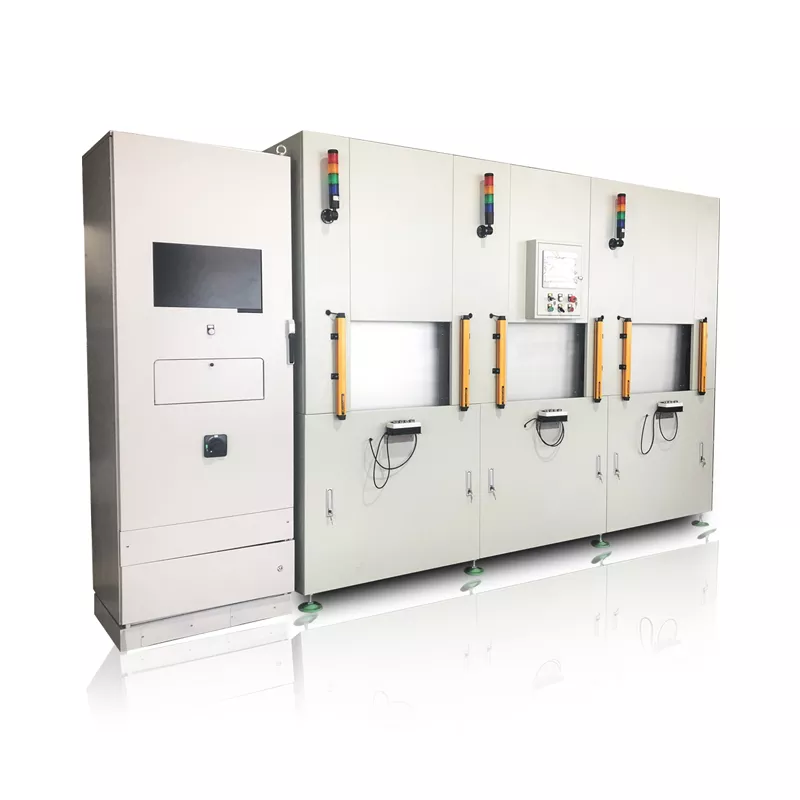In the intricate fabric of modern industry, ensuring the integrity of sealed systems is paramount. From automotive manufacturing to aerospace engineering, the need for detecting and mitigating leaks in air-tight systems is ever-present. Enter the air tightness leak detector, a sophisticated instrument designed to meticulously identify even the most minute breaches in sealed environments. In this comprehensive exploration, we delve into the workings, applications, and future prospects of air tightness leak detectors.

Understanding the Functioning of Air Tightness Leak Detectors
At the heart of an air tightness leak detector lies a sophisticated interplay of mechanisms geared towards one goal: pinpointing leaks with utmost precision. These detectors operate based on principles such as pressure differentials, gas permeability, and sensor technologies.
Pressure Differential Method:
The pressure differential method involves pressurizing the system being tested with a gas, typically air or nitrogen, and monitoring pressure changes. Any drop in pressure indicates a leak. This method is particularly effective for detecting leaks in sealed enclosures, pipelines, and pneumatic systems.
Gas Permeability Method:
In the gas permeability method, the detector introduces a tracer gas, such as helium or hydrogen, into the system. The detector then scans the area with sensitive sensors to detect the presence of the tracer gas, thus identifying the location of the leak. This method is highly sensitive and can detect leaks in systems with complex geometries.
Sensor Technologies:
Modern air tightness leak detectors utilize advanced sensor technologies, including mass spectrometry, thermal conductivity, and infrared spectroscopy, to detect trace amounts of gases and pinpoint leaks with unprecedented accuracy. These sensors can differentiate between background gases and leaked gases, enhancing the reliability of leak detection.
Exploring the Diverse Applications of Air Tightness Leak Detectors
Air tightness leak detectors find wide-ranging applications across various industries, each benefiting from their precise leak detection capabilities and reliability.
Automotive Industry:
In the automotive sector, air tightness leak detectors are instrumental in ensuring the integrity of vehicle fuel systems, air conditioning systems, and engine components. Detecting leaks in these critical systems helps prevent fuel wastage, reduces harmful emissions, and enhances vehicle performance and safety.
HVAC and Building Services:
In heating, ventilation, and air conditioning (HVAC) systems, maintaining air tightness is essential for energy efficiency and indoor air quality. Air tightness leak detectors are used to identify leaks in ductwork, air handlers, and building envelopes, ensuring optimal system performance and occupant comfort.
Electronics Manufacturing:
Electronics manufacturing facilities utilize air tightness leak detectors to verify the integrity of electronic enclosures, ensuring protection against dust, moisture, and other contaminants. Detecting leaks early in the production process helps prevent costly rework and ensures the reliability of electronic devices.
Pharmaceutical and Medical Devices:
In pharmaceutical manufacturing and medical device production, maintaining air tightness is crucial to prevent contamination and ensure product quality and safety. Air tightness leak detectors are used to validate the integrity of packaging, sterile barrier systems, and medical equipment, safeguarding the integrity of pharmaceutical products and protecting patient health.
Anticipating Future Developments in Air Tightness Leak Detection Technology
As technology continues to advance, the future of air tightness leak detection holds promising developments aimed at enhancing efficiency, accuracy, and versatility.
Integration of Artificial Intelligence:
Future air tightness leak detectors may leverage artificial intelligence (AI) algorithms to analyze complex data patterns and optimize leak detection processes. AI-driven detectors can adaptively adjust testing parameters, improve detection sensitivity, and reduce false positives, enhancing overall efficiency and reliability.
Miniaturization and Portability:
Advancements in miniaturization technologies may lead to the development of compact and portable air tightness leak detectors. These portable devices would enable on-site testing in diverse environments, facilitating rapid inspection and troubleshooting without the need for bulky equipment.
Enhanced Connectivity and Data Management:
Future air tightness leak detectors may feature enhanced connectivity options, allowing seamless integration with industrial automation systems and cloud-based data management platforms. Real-time data monitoring, analysis, and remote diagnostics would streamline maintenance workflows and optimize resource allocation.
Sustainable and Eco-Friendly Solutions:
With growing emphasis on sustainability, future air tightness leak detectors may prioritize energy efficiency and environmental sustainability. Energy-efficient operation modes, eco-friendly tracer gases, and recyclable materials would minimize environmental impact while maintaining high-performance leak detection capabilities.
Conclusion
In the realm of precision engineering, air tightness leak detectors stand as indispensable tools for safeguarding the integrity of sealed systems across diverse industries. From automotive manufacturing plants to pharmaceutical cleanrooms, these detectors play a vital role in ensuring compliance with stringent quality standards, optimizing energy efficiency, and safeguarding public health and safety. With ongoing advancements in technology and innovation, the future holds exciting possibilities for further enhancing the capabilities and applications of air tightness leak detectors, reaffirming their status as indispensable assets in the pursuit of excellence in engineering and manufacturing.

